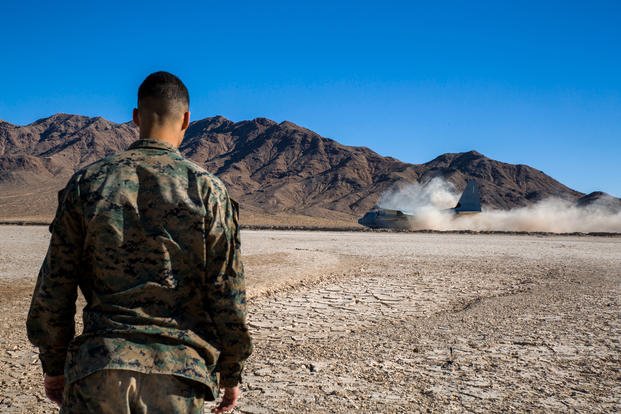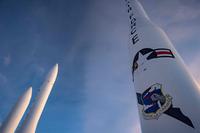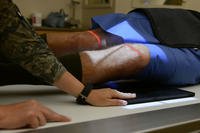U.S. Special Operations Command, plans to put five prototype aircraft through a rigorous battery of tests as it decides which to select for missions including surveilling extremist organizations and patrolling austere parts of the globe.
In a round table with reporters Monday at the virtual 2021 Special Operations Forces Industry Conference, SOCOM acquisition executive James Smith said tests to select an Armed Overwatch platform will run from about June 14 to July 23 at Eglin Air Force Base, Florida -- weather permitting.
SOCOM announced Friday that it had awarded $19.2 million in contracts to five vendors producing prototype aircraft for Armed Overwatch: The Bronco II from Leidos Inc.; MC-208 Guardian from MAG Aerospace; AT-6E Wolverine from Textron Aviation Defense; AT-802U Sky Warden from L-3 Communications Integrated Systems; and MC-145B Wily Coyote from Sierra Nevada Corp.
Read Next: Two Navy T-45 Trainer Aircraft Collide in Texas; One Pilot Treated for Minor Injuries
The Armed Overwatch program wants to field about 75 flexible, fixed-wing aircraft that could be deployed to austere regions and need only a light logistical footprint to operate. Lt. Gen. Jim Slife, head of Air Force Special Operations Command, told reporters these planes could help keep pressure on violent extremist organizations operating in remote places with uncontested airspace, such as parts of Africa.
When the vendors gather at Eglin next month, each of the aircraft will conduct five flights.
The first three flights will test how well each aircraft handles the most important capabilities an Armed Overwatch plane needs.
SOCOM wants to see whether the plane can take off and land on an austere runway, Smith said, and if it has the necessary range and endurance. SOCOM will also have the planes test their weapons on a firing range. He added that they must demonstrate their communications capabilities, both line-of-sight and beyond the line of sight, such as when the signal is obscured by terrain or other obstacles. And SOCOM will evaluate the planes' cockpit configurations, full-motion video capabilities, autopilot capabilities and oxygen systems, he said.
After those capabilities are evaluated over the first three flights, Smith said SOCOM will allow a fourth flight as a "makeup" opportunity if the first flights come up short.
The fifth and final flight will put a member of Air Force Special Operations Command in the "back seat" of the plane to assess its maneuverability and handling, he said. The airman will not be flying the aircraft.
Smith said the key questions SOCOM wants to answer as it observes the planes is whether they can "shoot, move, communicate."
"The austere takeoff and landing: Can it operate the airfields that we intend to operate it from?" Smith said. "The range of endurance: Does it have the legs to cover SOF operations from those airfields? Can it employ weapons? That's an important one. And then the communications, and tied to the communications to the weapons employment is the full motion video."
Smith said SOCOM has not changed its program requirements since its first industry day in March 2020. But in the future, SOCOM could look at adding other capabilities, such as teaming the aircraft with smaller drones, he said.
"This whole idea of collaborative autonomy, sensors -- whether they're ground, aerial, maritime etc. -- working together to aid the maneuver of our small units will absolutely be part of our future," Smith said. "But just so I don't strike fear in the heart of our industry partners, that's a future requirement."
The planes are intended to conduct intelligence, surveillance and reconnaissance missions, as well as close-air support and precision strike missions to support ground troops.
Smith said the Armed Overwatch aircraft, whichever ends up being chosen, will help SOCOM conduct counterterrorism operations in permissive environments.
SOCOM has taken a very agile approach to the acquisition process for Armed Overwatch, Smith said. And though he said he doesn't see a significant cybersecurity threat to the plane, the command will require programs to take a more "deliberate approach" to things such as supply chain, data and cybersecurity as it prepares for a potential conflict against a peer or near-peer adversary in the future.
-- Stephen Losey can be reached at stephen.losey@military.com. Follow him on Twitter @StephenLosey.
Related: These Are the 5 Planes Vying to Be AFSOC's New Armed Overwatch Aircraft















